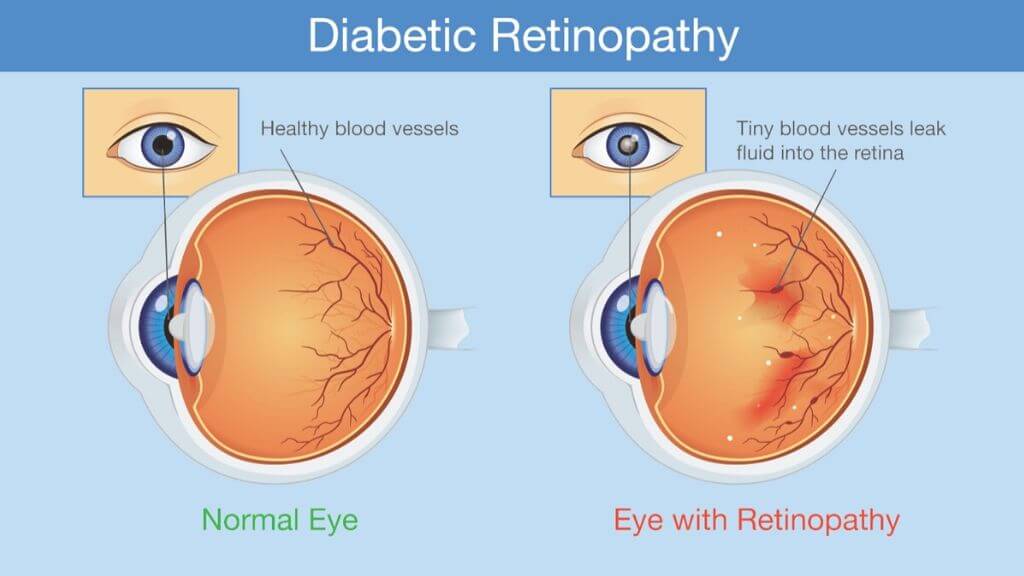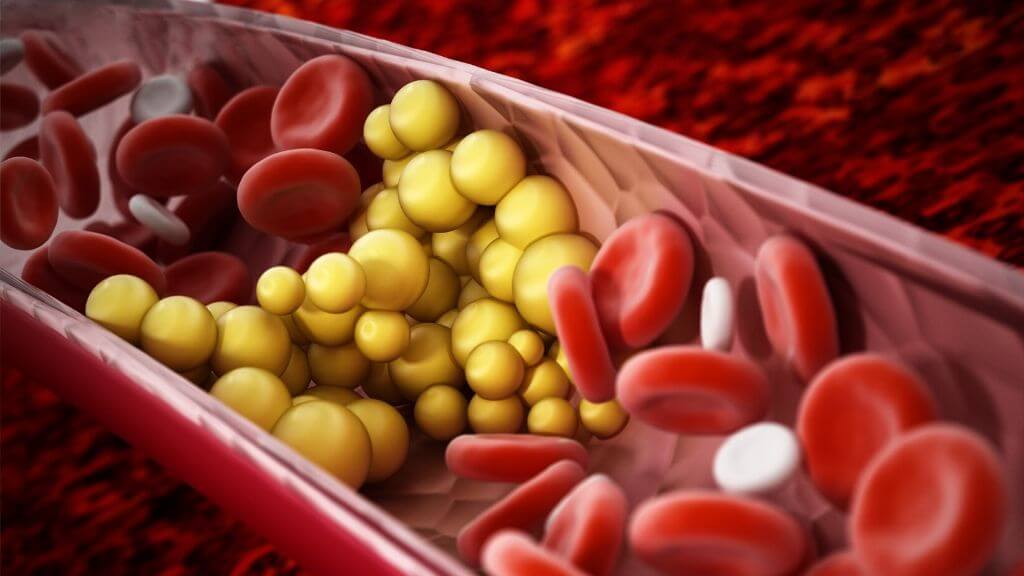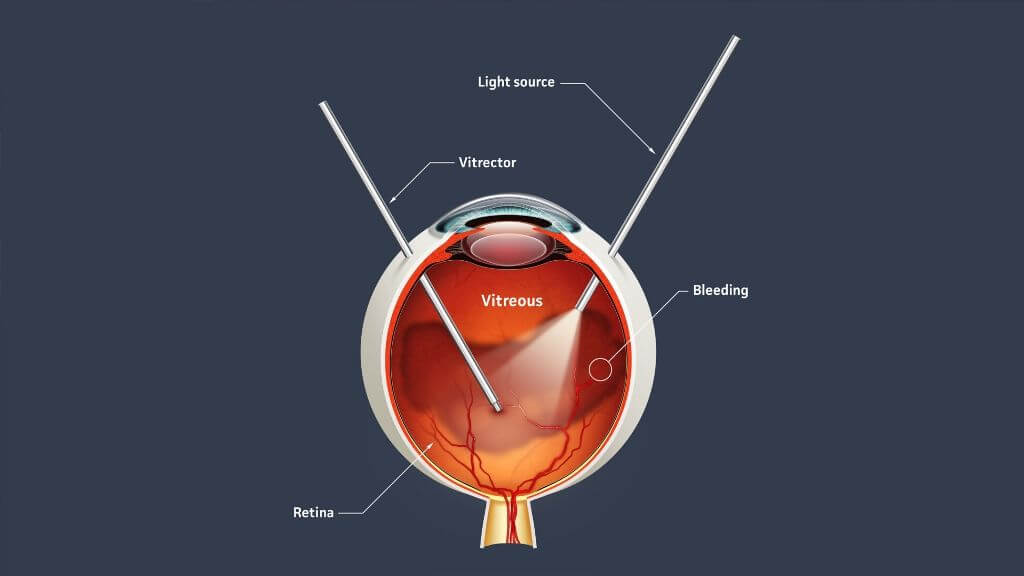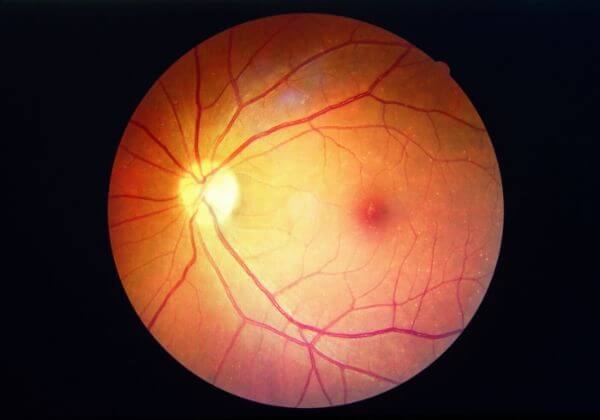There are a number of complications that can develop from diabetes. Diabetic retinopathy is one such complication that affects your vision.
Damage to the blood vessels of the retina can interfere with light sensitivity and vision. Symptoms of diabetic retinopathy can be mild at first, but it can eventually lead to blindness. Managing your blood glucose and diabetes reduces your risk for this complication.
What Is Diabetic Retinopathy?
Both type 1 and type 2 diabetes can lead to diabetic retinopathy. Uncontrolled blood glucose levels cause damage to tiny blood vessels that nourish the retina. Too much damage results in blockage.
Visual images are focused onto the retina, which translates the image into neural impulses for the brain to understand. Without blood supply to the retina, the eye tries to grow new vessels, but these do not develop correctly and leak.
What Causes Diabetic Retinopathy?
The cause of diabetic retinopathy is elevated blood glucose levels. The damaged and blocked blood vessels force the eye to develop new ones. The retina needs nourishment, and by cutting off the blood supply, the eye finds another way to get what it needs. The new blood vessels that develop are weak and leak easily causes diabetic retinopathy.

There are a number of factors that increase the risk of developing diabetic retinopathy.
♦ Poor control of blood glucose levels
♦ High cholesterol
♦ High blood pressure
♦ Smoking
The longer you have diabetes, the more at risk you are for developing this condition. Individuals that have had diabetes for over 30 years will show some signs of this condition.
Diabetic Retinopathy Symptoms
There may not be symptoms in the early stages of diabetic retinopathy. Symptoms will become more apparent as the condition progresses. Recognizable symptoms include:
♦ Blurred vision
♦ Fluctuating vision
♦ Impaired color vision
♦ Difficulty seeing at night
♦ Floating spots
♦ Vision loss
Diabetic Retinopathy Diagnosis
Your doctor will diagnose diabetic retinopathy using a dilated eye exam. Eye drops are used to dilate the pupils, so they open wide. Your doctor can look through the widened pupils to check for:
♦ Swelling
♦ Abnormal blood vessels
♦ Blocked blood vessels
♦ Leaking
♦ Scarring
♦ Changes in the lens
♦ Retinal detachment
♦ Nerve tissue damage
An additional test known as an optical coherence tomography can also be done. This uses light waves to produce images of the retina so your doctor can evaluate its thickness. This test also determines how much fluid is accumulated in the retina, if any.
Treatment for Diabetic Retinopathy
Treatment depends on which type you have and will be designed to slow down or stop the progression of the condition. Early diabetic retinopathy may not require treatment right away. In these cases, your doctor will monitor your eye health closely to determine when treatment will be necessary.

Blood glucose control can help slow the progression during this early stage. Advanced diabetic retinopathy will require surgical treatment.
Diabetic Retinopathy Diet
Preventative action is the best way to approach diabetic retinopathy. High cholesterol, high blood pressure, and high blood glucose levels all increase the risk of this condition.
Dietary changes can be made to help reduce these risk factors and therefore reduce the chances of developing retinopathy. One of the best diets to meet these needs is the Mediterranean diet. This diet incorporates fresh fruits and vegetables, healthy fats, and whole grains. These foods can help prevent diabetic retinopathy in several ways.
♦ Lower salt and unhealthy fat intake help to keep blood pressure low.
♦ A focus on healthier fats reduces triglycerides and cholesterol in the blood.
♦ Reduced intake of sugary and processed foods keeps blood glucose levels maintained.
♦ Whole grains deliver fiber, which helps control blood glucose.
Natural Treatments for Diabetic Retinopathy
There is no natural cure for diabetic retinopathy, but you can take preventative measures. If you are already diagnosed with diabetes, there are several things you can do to reduce the risk of this condition.
Controlling your blood glucose levels is an important step in the management of diabetes. It is also important to quit smoking and to see your doctor every year for routine eye exams.
In addition to this, you can also try:
♦ Bilberry: This is packed full of vitamins A and C, which protect the eye.
♦ Grape seed extract: This prevents blood from leaking from damaged or abnormal blood vessels.
♦ Quercetin: This flavonoid helps prevent blood clots and reduces blood pressure. This compound reduces the amount of pressure within the blood vessels of the eye.
♦ Parsley: This herb contains vitamin C and lutein, both powerful antioxidants that protect the eye.

What Are the Variations of Diabetic Retinopathy?
There are two types of diabetic retinopathy.
Early Diabetic Retinopathy
Also known as nonproliferative diabetic retinopathy, this is the more common type of the condition. The walls of the blood vessels to the retina weaken, and bulges begin to appear in the vessel walls and can leak fluid into the retina.
Larger blood vessels dilate and develop irregular diameters. Nerve fibers in the retina can also swell. As more blood vessels become blocked, this type can progress from mild to severe.
Advanced Diabetic Retinopathy
Early diabetic retinopathy can develop into this proliferative type of retinopathy. The damaged blood vessels close off, causing new ones to form. These new blood vessels are abnormal and leak fluid into the center of the eye. Scar tissue from the new blood vessel growth can force the retina to detach from the back of the eye.
When the new blood vessels interfere with fluid flow from the eye, the buildup increases pressure on the optic nerve, causing glaucoma.
Diabetic Retinopathy Statistics
♦ Diabetic retinopathy affects an estimated 65,000 people in the United States.
♦ 30,000 adults with retinopathy can maintain vision with timely laser surgery.
♦ Diabetes causes 8,000 new cases of blindness each year in the United States.
Diabetic Retinopathy and Surgery
Surgery is required for the treatment of advanced diabetic retinopathy. Depending on the problems with your retina, there are different surgical options available.
♦ Photocoagulation: Also known as focal laser treatment, this procedure stops the leakage of blood and fluid. Leaks from abnormal blood vessels are treated with laser burns. This procedure is done at your doctor’s office and can reduce the worsening of macular edema.
♦ Panretinal photocoagulation: This is another laser treatment that shrinks the abnormal blood vessels. The areas of the retina that are detached from the macula are treated with scatter burns. Abnormal blood vessels shrink and scar. There is a risk of some loss of night vision or peripheral vision as a result of this procedure.
♦ Vitrectomy: A tiny incision is made in the eye to remove blood and scar tissue. This procedure is done under local anesthesia in a hospital.
♦ Injections: Medications can be injected into the vitreous of the eye. Vascular endothelial growth factor (VEGF) inhibitors can stop the growth of new blood vessels. This is often used in conjunction with coagulation laser treatment.

Diabetic Retinopathy and Children
It is unusual for children to develop diabetic retinopathy, but it can happen. It is especially common in poorer communities.
Diabetic retinopathy can develop in children with diabetes. A year of uncontrolled blood glucose levels significantly increases the risk. Regular eye exams in children with diabetes are recommended, so any potential damage can be identified and treated early.
What Is the Long-Term Outlook?
Having diabetes increases your risk of developing diabetic retinopathy. There is no cure for the condition, but blood glucose control can significantly reduce your risk. Regular eye exams can identify damage early on, which is an important step in managing eye health. Without treatment, diabetic retinopathy can lead to blindness.
Be aware of any changes in your vision, maintain healthy cholesterol and blood pressure levels, and get your eyes checked every year.






